Te Mania Angus cows are run in mobs of up to 600, in a cell grazing system. Running cows in a commercially economic environment places physical restrictions on the herd so uneconomic traits are quickly identified. The system acts as a filter to quickly identify any adverse genetics that may slip through the scrutiny of genetic selection.
It is also very important to have mobs running in large contemporary groups to ensure that Breedplan Estimated Breeding Values (EBVs) are as accurate as possible.
Te Mania Angus females are downgraded to the recipient herd or culled, according to the Te Mania Angus selection criteria –
- All females must have a calf every 12 months in line with the joining period.
- All females must have a live calf unassisted.
- All females must have structural assessment scores between 3 and 7, including udders and teats.
- Only a good temperament is acceptable.
- All females must have EBVs which will increase profitability.
- All females must maintain themselves in a desirable condition score.
All calves are weaned at five months of age. Early weaning has been introduced to enhance rumen function and to allow the mothers a better run through the Autumn and Winter.
The calves are weighed and tagged with an NLIS tag and stud tag on the day they are born. They are weighed again at weaning and at 400 days, when they are ultrasound scanned for marbling, fat cover and eye muscle area. Heifers are weighed again at 600 days and all this data is submitted to Breedplan.
Cows are weighed at weaning, which is processed for the Mature Cow Weight EBV.
All the cow herd mating details are recorded with Group Breedplan, which calculates a gestation length EBV. Short gestation length is a crucial EBV to use along with Birth weight when selecting young bulls to use over heifers.
Heifer management
Our aim is to develop heifers to:
- Conceive early as a heifer to calve at two years of age
- Calve unassisted
- Re-conceive early as a first calver
This requires careful attention to:
- Nutrition from weaning to 27 months of age
- Disease control programs
- Bull selection
Calving unassisted
Minimising dystocia is an important part of developing your heifers to achieve their maximum lifetime production. The window of opportunity to have an influence on the level of dystocia in your heifers starts at weaning and finishes when the heifers have all calved down as two-year-olds. The major management tools in controlling dystocia in beef heifers are:
- Growing heifers well up until the third trimester
- Restricting nutrition/exercising heifers in the last trimester
- Correct bull selection for heifer matings
Most beef heifer dystocia is due to the calf being too big for the pelvis of the heifer. Very little dystocia in beef heifers is due to metabolic imbalances (unlike diary cattle).
If most beef heifer dystocia is due to the calf being too large for the pelvis, what can be done to prevent dystocia?
- Ensure the heifer’s pelvis area is well developed for her genetics
- Minimise the size of the calf.
To ensure the heifer’s pelvic area is well developed we need to provide the heifer with good nutrition up to six-seven months of pregnancy. This will allow the heifer’s skeletal system to develop properly.
Heifers that have had reduced levels of nutrition will be smaller and have a correspondingly smaller pelvic area. This is not to be confused with heifers which are genetically small.
There are three major factors influencing the birthweight of calves from heifers:
- Their genetics (dam and sire)
- Calf sex
- Inutero nutrition (mostly last trimester)
The genetics of the heifer (dam) is unable to be changed and at this stage we are unable to influence the sex of the calves, so we can ignore both of these when we are trying to identify methods for reducing calf birth weight.
The tools we have available today to have a large impact on the birth weight of calves are the bull selection used to join the heifers (EBVs for BW, calving ease direct and possibly GL) and the nutrition we supply the heifer during pregnancy, particularly for the last two/three months of pregnancy.
The birthweight effect of the bull can be compensated for by managing the nutrition better. That is to say some higher birthweight bulls will have no, or few, calving difficulties if the heifers are skeletally well grown (supplied with good nutrition up to the end of the second trimester) and then supplied with restricted feed intake and exercise in the last trimester to limit further weight gain of the heifer and foetus. It is also important to understand the difference between autumn and spring calving.
On average autumn born calves will be two-to-three kilograms lighter, which means bulls that have been a safe heifer bull in an autumn calving may not be in a spring calving.
Dystocia in heifers is often higher in some districts in certain years.
This occurs due to the incorrect level of nutrition being supplied either in the last trimester (too much feed) or the heifers having been weaners and yearling cattle during a period of poor feed supply, which has limited their skeletal development.
We need to take a more professional approach to our heifer development and monitor their weight and body condition from weaning up until calving.
This approach will decrease the workload of assisting calvings and boost profitability by increasing the number of live calves.
In July we are in the last trimester for most spring calving heifers.
They should be in BCS 3.5, particularly this year with such a good season in most areas. It is now time to restrict any further weight gain by having them graze lower quality pastures (native hill country). If this is not possible reduce their intake of higher quality pastures by increasing the effective stocking rate in the paddocks. Any exercise is going to consume energy and further restrict weight gain so exercise is good for late pregnant heifers.
Excessively fat heifers will also have the added problem of fat within the pelvis occupying space and limiting the area for the calf to pass through. Don’t let heifers get excessively fat prior to calving.
If you are having ongoing dystocia problems in your heifers you need to revisit your heifer development program and heifer bull selection.
If your program is working well most years then you need to identify which part is not ideal in the problem years and put a system in place to overcome it.
There is a fine line to the restriction of heifer nutrition in the last trimester. If you over-restrict their nutrition they can become energy deficient and have difficulties calving due to this low energy level (these calves are unusually small).
To identify any weakness in your system it is important to keep good records. For dystocia management purposes this would include heifer weights and BCS from weaning up until calving, level of nutrition at the different stages, EBVs of bulls used, assisted or dead calves, calf weight, calf sex, date born and reason for assisting.
This information is important in trying to identify what action needs to be taken to reduce the level of dystocia.
There are no silver bullets for heifer dystocia.
A nutritional supplement for the last month of pregnancy cannot change the genetics of the calf or compensate for the incorrect level of previous nutrition.
Dystocia management starts when you wean the heifer and you buy your next bull and continues through until the heifer calves.
Important points
- Most of the beef heifer dystocia is due to the calf being too big for the heifer’s pelvis.
- Supply heifers with good nutrition up to six-to-seven months of pregnancy, to allow the heifer to
- reach puberty early and go in calf early in the joining period
- optimise skeletal growth
- be in BCS 3 at calving to allow her to re-conceive
- Restrict nutrition/exercise heifers in the last trimester to prevent weight gain. Any weight gain at this stage will cause excessive foetal growth.
- Select the correct heifer bull. Use EBVs and your previous experience of what level of EBVs your heifers and production system can tolerate. Remember spring born calves will be heavier than autumn-born calves.
- Join your heifers for a short period so they calve down over a short period. This short calving period is beneficial because:
- it is easier to supervise for six weeks rather than eight-to-10 weeks
- you can tailor the nutritional program better to all heifers
- there is a better chance of going back in calf if they calve early in the calving period
- Consider pregnancy testing heifers early and splitting into calving groups to allow for better nutritional management.
Heifer Management
– Reon J Holmes BVSc, Holbrook Veterinary Centre




